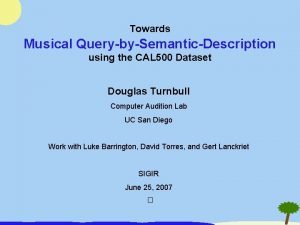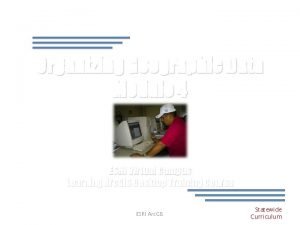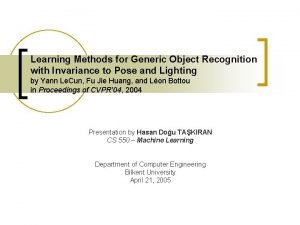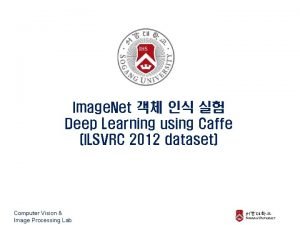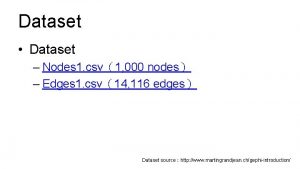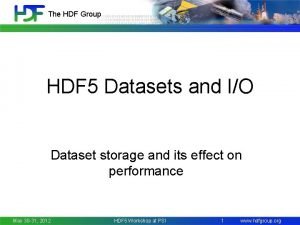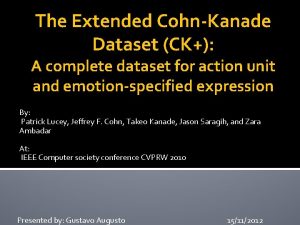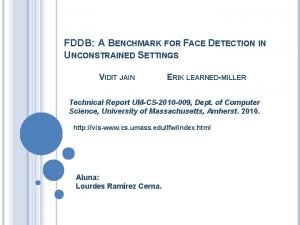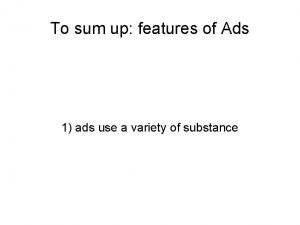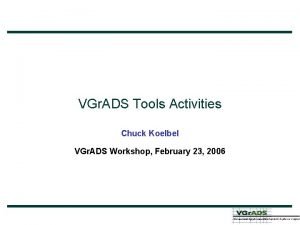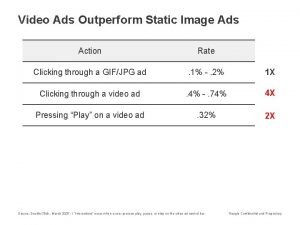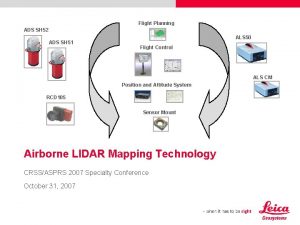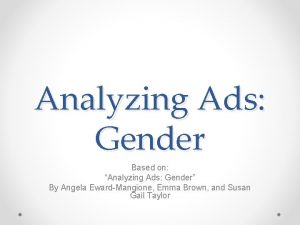Ad classification on Divar dataset dataset 947653 ads





















- Slides: 21

Ad classification on Divar dataset

dataset 947653 ads min length: 1, max length: 349 split to training and test sets -> 3 to 1 split is done in a stratified fashion metric -> accuracy on test set pre-processing: ◦ Tokenization ◦ stemming? ◦ removing numbers and punctuations?

Different classification methods SVM ANN CNN RNN

SVM features -> n-grams feature values -> binary, count, tf-idf kernel -> linear

SVM results Binary Count Tf-idf Unigrams 86. 92 87. 46 Unigrams & Bigrams 87. 14 87. 19 88. 59 Unigrams & Bigrams & Trigrams 86. 82 86. 81 88. 46

ANN Average of the embeddings of words in an ad vocab size = 50000 Should pad sentences ◦ maximum length = 200 Number of layers? Dropout or Batch Normalization? Different approaches for word embeddings: ◦ pre-trained word embeddings ◦ train embeddings on the training set ◦ randomly initialize embeddings

Embedding approaches: Fast Text pretrained test accuracy -> 86. 4

Embedding approaches: Random init test accuracy -> 86. 38

Embedding approaches: train on training set! test accuracy -> 88. 06

Other parameters 2 layers Dropout or batch normalization or both? ◦ Both! ◦ Drop out after Batch Normalization

CNN

CNN Transform the sentence to a matrix of size l * d Apply 1 d convolution on sentences the pooling Basically encoding n-grams where n is the kernel size Choose multiple kernel sizes(n) the concatenate in the end Average pooling worked better

Kernel sizes 2, 3, 4 + Average Pooling test accuracy -> 88. 46

Kernel sizes 3, 4, 5 + Average pooling Test accuracy -> 88. 39

RNN LSTM or GRU -> bi-directional LSTM how many layers? 1 hidden state size -> 300 only pad each batch not the whole dataset Final out of RNN: ◦ Global max pooling ◦ Attention ◦ Just the last state!

RNN with only the last state Test accuracy -> 88. 48

RNN with global max pooling test accuracy -> 88. 78

RNN with attention Test accuracy -> 88. 87

CNN + RNN CNN ignores the order of n-grams We could use an RNN with a conv 1 d and pooling layer pooling makes sequences shorter which results in faster RNN training

CNN + RNN kernel size = 2, Average pooling size = 5 Test accuracy -> 88. 46

Results model Accuracy on test set SVM + Uni_bi-grams + tf-idf 88. 59 ANN + average embeddings 88. 06 CNN(2, 3, 4) 84. 46 CNN(3, 4, 5) 88. 39 Bi. LSTM + attention 88. 87 Bi. LSTM + max pooling 88. 78 Bi. LSTM 88. 48 CNN + RNN 88. 46
 Components of accenture delivery suite
Components of accenture delivery suite Difference between indoor and outdoor advertising
Difference between indoor and outdoor advertising Balanced and unbalanced dataset
Balanced and unbalanced dataset Hansen dataset
Hansen dataset Sliding window detector
Sliding window detector Cal500 dataset
Cal500 dataset Feature dataset vs feature class
Feature dataset vs feature class Multiple regression dataset
Multiple regression dataset Norb dataset
Norb dataset Uniform closing dataset
Uniform closing dataset Ilsvrc 2012 dataset
Ilsvrc 2012 dataset Nodes and edges dataset csv
Nodes and edges dataset csv Reddit tifu dataset
Reddit tifu dataset Hdf dataset
Hdf dataset Cohn kanade dataset
Cohn kanade dataset Ntt data figtree systems
Ntt data figtree systems Cocomo 81
Cocomo 81 Face detection benchmark
Face detection benchmark Usgs national hydrography dataset
Usgs national hydrography dataset Us crime dataset kaggle
Us crime dataset kaggle Undoing the damage of dataset bias
Undoing the damage of dataset bias Analisi univariata esempio
Analisi univariata esempio





